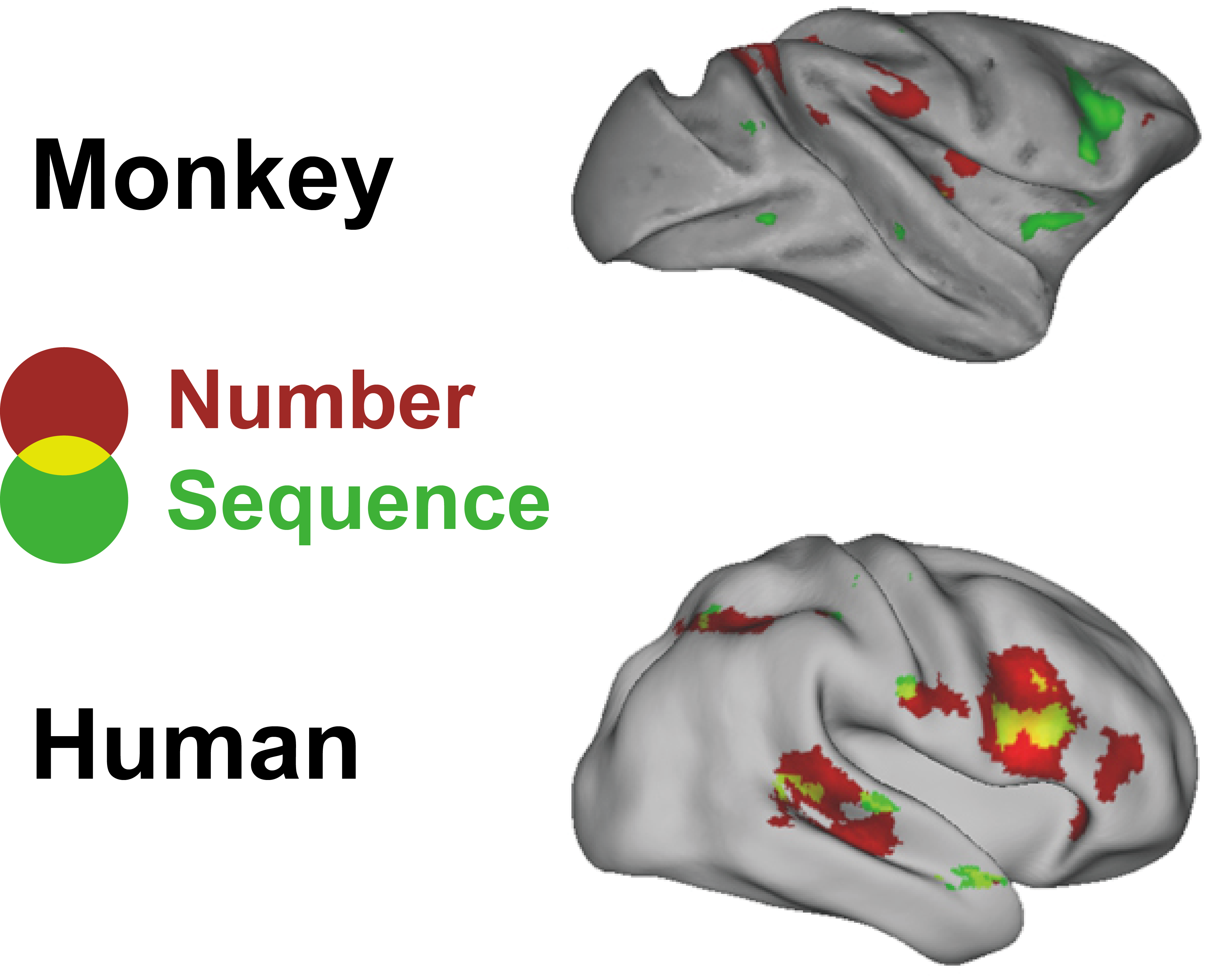In this study, conducted at NeuroSpin, Stanislas Dehaene (Professor at the Collège de France, Director of the Unit "Cognitive Neuroimaging" at Inserm/CEA/Paris-Sud University) and Bechir Jarraya (Professor of Neurosurgery at the University of Versailles-Saint-Quentin), with Liping Wang and Lynn Uhrigh, used a non-invasive functional imaging method – functional MRI at 3 Tesla. They exposed three macaques and twenty volunteers to regular auditory sequences, e.g. three identical sounds followed by a different fourth sound (a sequence denoted AAAB). They occasionally played a sequence that violated this regularity, either because it included a different number of sounds (e.g. AAAAAB) or because the sequence of sounds was abnormal (e.g. AAAA, not ending in sound B).
The monkey brain reacted to changes in numbers and sequences, indicating a certain capacity for abstraction. However, it did so in separate, specialised regions for either the number or the sequence. The human brain, by contrast, incorporated both parameters in regions that coincide with the language areas.
Thus, while the monkeys recognised isolated properties such as "four sounds" or "the last is different," evolution seems to have endowed our species with a specific ability to integrate this information into a coherent whole, a formula such as "three sounds, then another" - the beginning of an inner language?
Although the abstract representation of sound sequences is possible in non-human primates, the evolution of a new brain circuit, connected to the auditory areas, could therefore have allowed our species to acquire the unique skill to compose and recognise the complex sequences that characterise human languages.

This figure illustrates the unique ability of the human brain to integrate abstract auditory information. Certain brain regions are associated with detection of a change in the number of sounds by the brain, regardless of a concomitant modification of the sequence of sounds (red areas in the figure). Conversely, some brain regions detect changes in the sequence of sounds, regardless of their number (green zones). In the monkey brain, these two sets of regions are disconnected. Their intersection (depicted in yellow) – that is to say those regions that integrate both the information "change of sound sequence" and "change of the number of sounds" – exists only in the human brain. All the activations detected are projected onto a lateral view of the right hemisphere for the purposes of representation. © Liping Wang